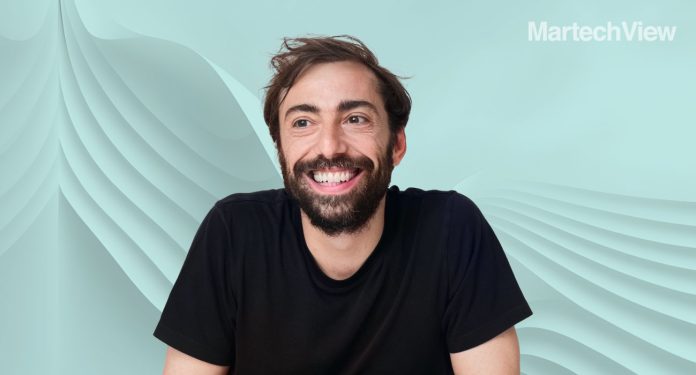Dive into Davide Colla’s creative process and advice for aspiring designers! A glimpse into the future of business and design!
Davide Colla embodies the spirit of a modern Renaissance man. With a foot in both the worlds of design and entrepreneurship, he’s not just shaping brands; he’s building them from the ground up. In this interview, we delve into the fascinating journey of Colla, Founder and Creative Director at 150UP and Co-Founder of Viento Padel brand.
From identifying a gap in the design industry to nurturing future design talents, Colla’s passion extends beyond just creating beautiful visuals. He believes in building strong narratives for brands that resonate and connect with audiences. But that’s not all. He also wears the hat of an entrepreneur, bringing his creative vision to life with Viento, a testament to his ability to marry passion with strategy.
Curious to know how Colla navigates these diverse roles? What drives his creative process? And what advice does he have for aspiring designers? Join us as we unlock the secrets behind this multi-faceted creative force!
Full interview;
How do you envision the convergence of AI, 3D, VR, and the metaverse reshaping the business landscape in the coming years?
These innovative technologies are completely transforming the entire industry, and this trend is set to continue evolving in the years ahead.
Despite being a highly debated and controversial topic today, it’s undeniable that the ability to have such a realistic visual response to thoughts and words is revolutionary, and what’s even more incredible is that it’s within everyone’s reach.
However, I’d like to say that all these technologies, while being a fantastic starting point, can never be the result. I believe they are incredibly powerful tools for the research and visualization aspects supporting professionals — a fast and super-realistic way to represent one’s ideas, whether in the form of a photograph, a storyboard, a logo, or a mockup.
The widespread use of 3D elements, whether in product design, virtual environments, or augmented reality applications, introduces a new dimension of realism and interactivity that makes it possible to express what is impossible to achieve, especially in video campaigns. As VR becomes more accessible and sophisticated, it’ll create new and innovative opportunities for businesses to engage with their audiences in revolutionary ways.
But all this wouldn’t generate astonishing results if there weren’t real designers behind each project, creating and carrying them forward.
In your view, how can these technologies transform brand experiences and engagement strategies for companies?
In the contemporary landscape, integrating transformative technologies like 3D, VR, and AI has become the focus in reshaping brand experiences and revolutionizing company engagement strategies. Collectively, these innovative tools offer a paradigm shift by providing immersive, interactive, and personalized content and experiences.
This not only enhances accessibility but also provides consumers with a sense of presence and interaction that transcends physical boundaries.
How can brands leverage these technologies to create more personalized and immersive experiences for their users or customers?
Brands can truly transform the user experience by embracing cutting-edge technologies.
Integrating new technologies, like AI and VR, opens up new frontiers for immersive experiences so brands can craft lifelike and interactive encounters that go beyond traditional boundaries.
One thing I’ve learned over the years is that users need to feel connected to what surrounds them, to feel involved in the products and services, and therefore, to meet their needs; all these must be more personalized and attractive, fostering a deeper connection. This strategic technology implementation enhances user engagement and cultivates brand loyalty, ultimately elevating the overall customer experience.
Also Read: From CDP Pioneer to AI-Powered Future: A Chat with David Raab
From a technical standpoint, how do you approach integrating AI, 3D, VR, and metaverse technologies into a cohesive and effective solution?
One of the advantages I’m experiencing in my everyday work is the pre-visualization of the projects. It often proves challenging to convey to our clients, through mere reference images, how we expect the final output of a campaign to be.
In our creative studio, we use all the most innovative technologies to bring our ideas to life; we often work on 3D projects to create and combine elements to generate realistic scenarios. This technology allows us to place the products within absurd and surreal environments, making them perform actions that could never happen, leaving everyone amazed.
AI also empowers the creation of extraordinary and otherworldly things. Starting from natural language descriptions, we can create shots that combine subject, framing, lighting, and action to present to the client and effectively communicate the direction we want to take.
One of the greatest challenges is learning to strategically use prompts to find formulas that visually convey an idea or lead you to the detailed answer you seek.
Balancing the creative and business aspects of your roles can be challenging. How do you balance artistic vision and commercial viability in your projects?
Achieving a perfect balance between my role’s creative and business aspects has been a dynamic challenge. Uncovering a strategic approach has been crucial in successfully navigating this complex balance.
Strategically planning what I have to do in a project and how to organize it is critical for me, so I create a detailed project plan that integrates both creative and commercial elements, studying and always thinking about what can appeal to the target audience, as well as intelligently following trends that can bring you visibility and success and at the same time a return in economic terms.
Adaptability and flexibility are two key elements to surviving in an ever-changing environment, and having a flexible mindset enables me to respond effectively to changing dynamics without losing sight of my creative goals.
Finally, maintaining continuous feedback loops is crucial. I actively seek and appreciate input from the audience throughout the development process. This interactive approach enables me to enhance artistic and commercial elements in response to real-time feedback, ultimately contributing to the project’s overall success.
Also Read: Metricool’s Growth Lead on Data, Influencers and AI’s Impact
What are the emerging trends in the creative and technology space that professionals should be aware of?
Experts should monitor several emerging trends in the fluid scenario where creativity and technology converge. Starting with the Internet of Things (IoT), which continues to reshape industries by fostering real-time connectivity between devices and unlocking new possibilities in different sectors, for example, creating aesthetically appealing and easy-to-use apps with intuitive graphical user interface, as we did for a collaboration with Alessi to launch their new line of home automation products.
Conversely, AI is revolutionizing how we handle data, make decisions, and engage with technology. Within my practice, we extensively harness AI’s power, particularly to visually explain concepts that would be inaccurately conveyed through traditional references.
We then come to the rise of Computer-Generated Imagery (CGI), which in the very last few years has introduced the possibility of unprecedented visual storytelling, offering realistic and immersive experiences across various media platforms, as well as the use of Virtual and Augmented Reality that allows us to simulate immersive and interactive three-dimensional environments. In this field, we created two virtual galleries; one, The Bit Hall -still active- is based on a 3D space accessible directly from the web, where we host third-party exhibitions and NFT sales. The other was a multifunctional space we designed for Mohd, where we explored the variety of their products. This gallery was also made in 3D, and all the interiors have been rendered in detail to make the whole experience as realistic and interactive as possible.
As for the daily tools used in our studio, such as Figma, Slack, and Pitch, they play an important role in facilitating teamwork. These platforms enhance interaction and streamline project execution, enabling us to collaborate in real-time and fostering creativity and efficiency.
In conclusion, I can confidently say that the symbiotic relationship between creativity and technology is more evident than ever. Creativity needs the support of technology to innovate and generate something powerful, and vice versa. Professionals who embrace these developments can unlock new dimensions of possibility in this ever-changing world.










